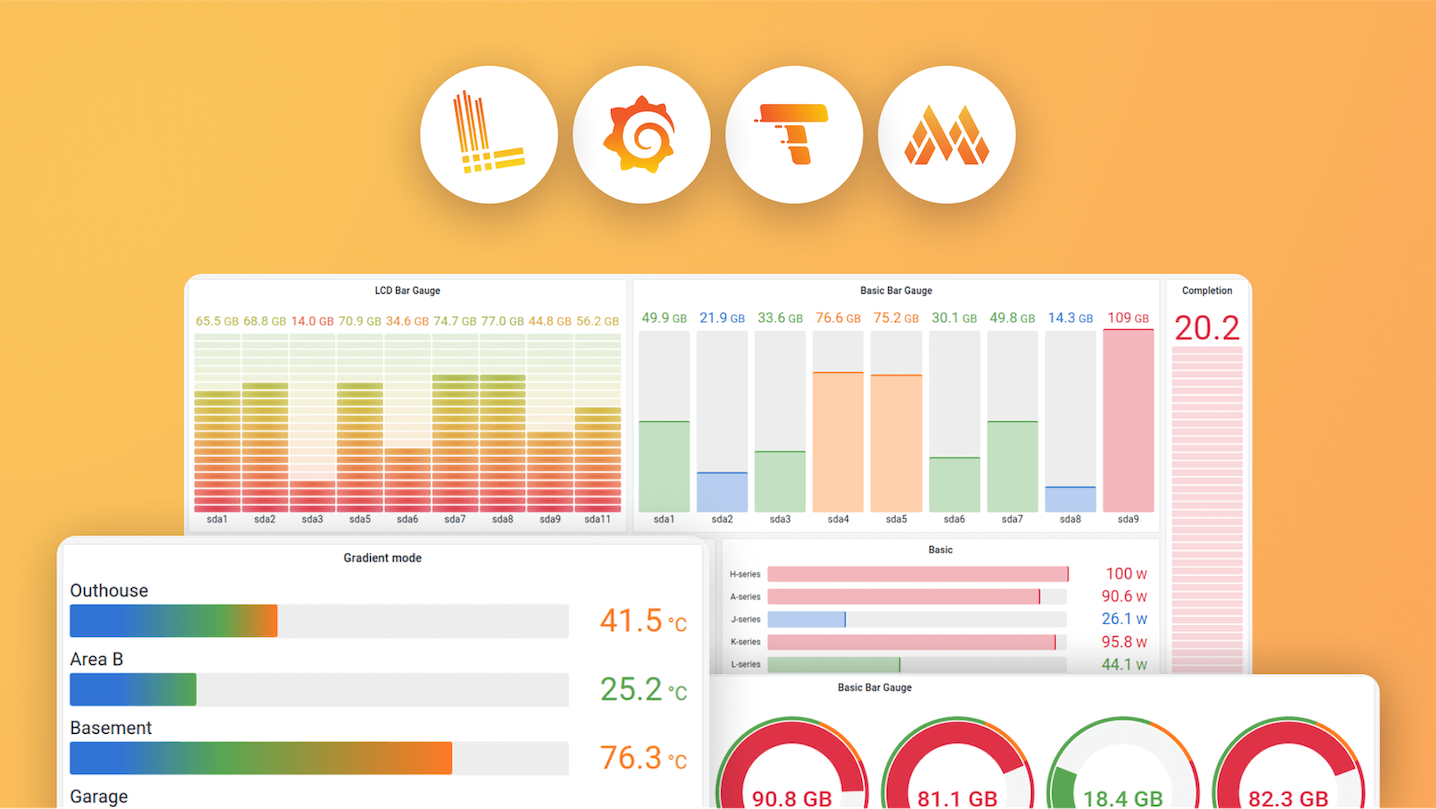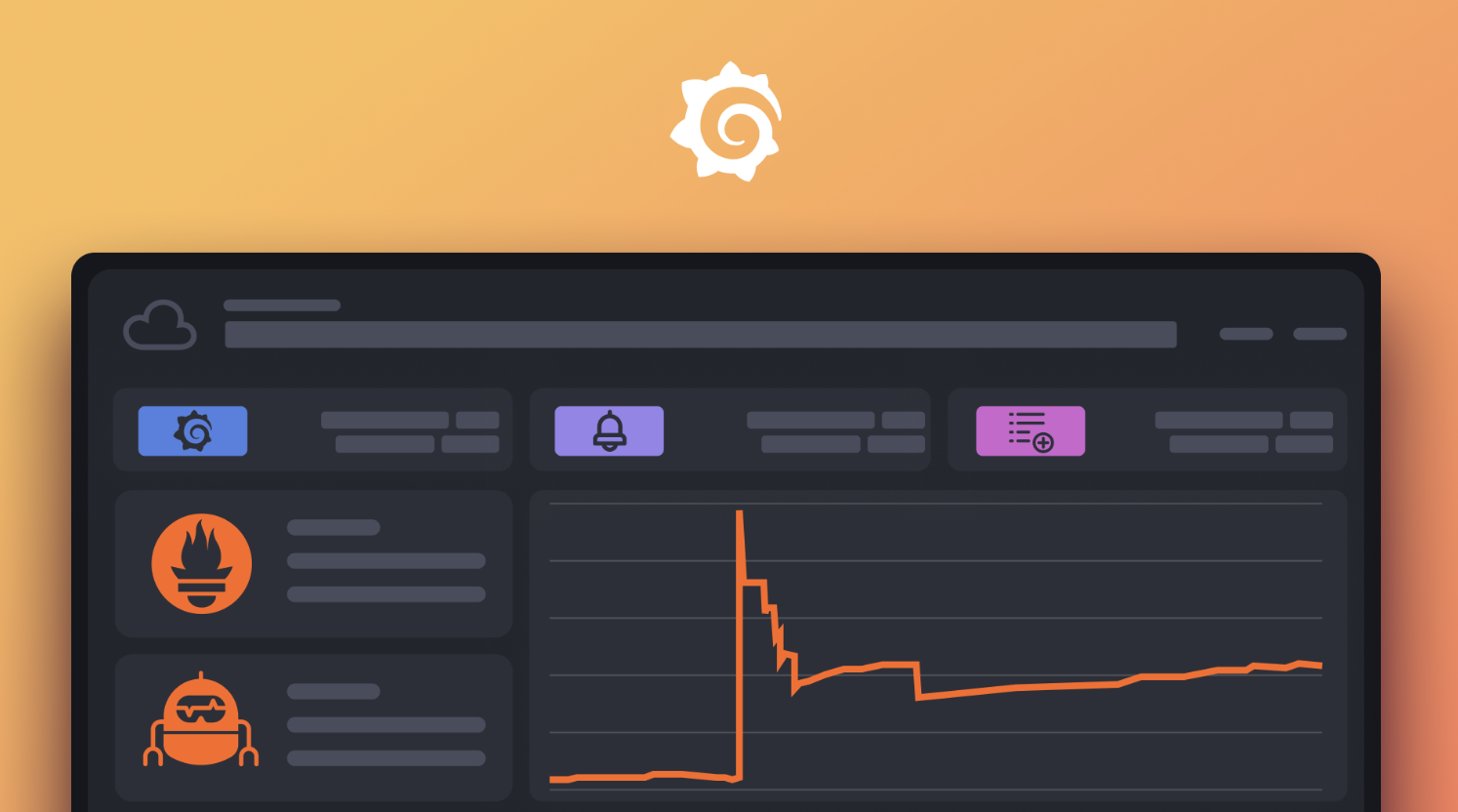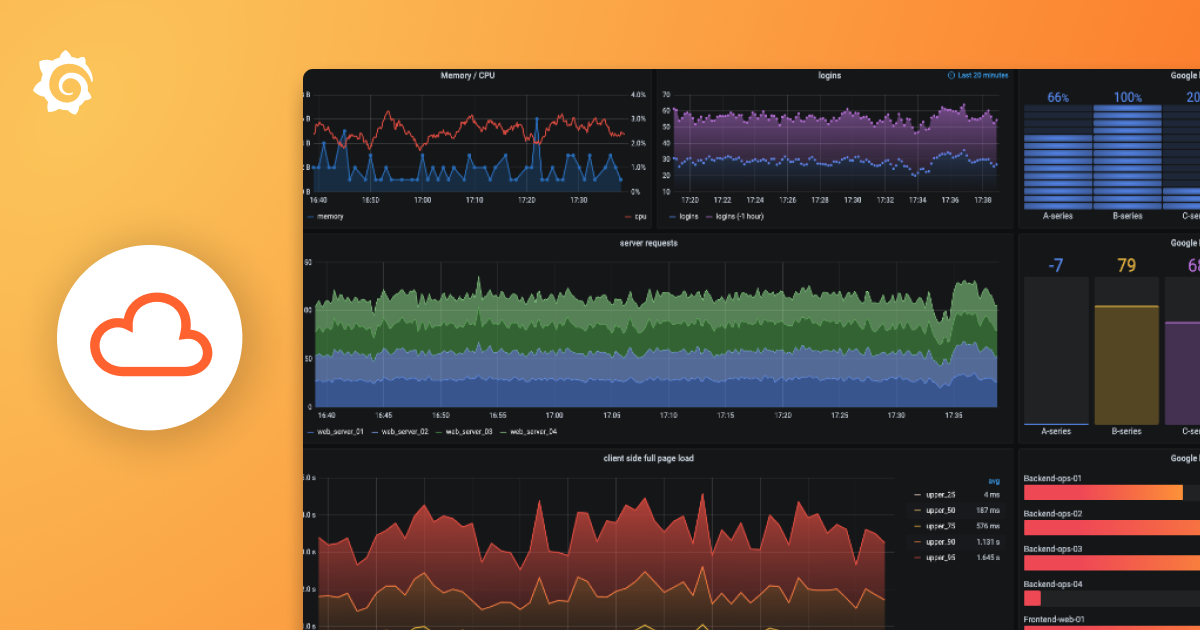Plugins 〉Oracle Cloud Infrastructure
The Oracle Cloud Infrastructure plugin has been deprecated and is no longer maintained.
Oracle Cloud Infrastructure
This plugin is DEPRECATED, please use the Oracle Cloud Infrastructure Metrics plugin instead.
Oracle Cloud Infrastructure Data Source for Grafana
Introduction
This plugin makes queries to the Oracle Cloud Infrastructure Telemetry Service and displays them on Grafana.
If you are running Grafana on a machine instance in Oracle Cloud, use the Service Principal with a configured Dynamic Group and policy to allow you to read metrics and compartments.
If you are running Grafana anywhere else, make sure you have ~/.oci configured properly. You can do this by installing the Oracle Cloud CLI and running the setup
Note
If you're using a version of Grafana that's older than 6.0, you will need to download the zip file and install this plugin manually, or chmod the binary that is downloaded to make it executable.
Installation Documentation
In order to simplify the installation process, we created detailed guides for you to follow:
- Install Grafana and the Oracle Cloud Infrastructure Data Source for Grafana on a Linux host using this document.
- Install Grafana and the Oracle Cloud Infrastructure Data Source for Grafana on a MacOS host using this document.
- Install Grafana and the Oracle Cloud Infrastructure Data Source for Grafana on a virtual machine in Oracle Cloud Infrastructure using this document.
- Install Grafana and the Oracle Cloud Infrastructure Data Source for Grafana on a virtual machine in Oracle Cloud Infrastructure using Terraform using this document.
- Install Grafana and the Oracle Cloud Infrastructure Data Source for Grafana on Kubernetes in Oracle Cloud Infrastructure using this document
Once you have the data source installed, configure your datasource with your tenancy OCID, default region, and where you're running the plugin (Oracle Cloud or elsewhere).
We also have documentation for how to use the newly installed and configured plugin in our Using Grafana with Oracle Cloud Infrastructure Data Source walkthrough.
Grafana Cloud Free
- Free tier: Limited to 3 users
- Paid plans: $55 / user / month above included usage
- Access to all Enterprise Plugins
- Fully managed service (not available to self-manage)
Self-hosted Grafana Enterprise
- Access to all Enterprise plugins
- All Grafana Enterprise features
- Self-manage on your own infrastructure
Grafana Cloud Free
- Free tier: Limited to 3 users
- Paid plans: $55 / user / month above included usage
- Access to all Enterprise Plugins
- Fully managed service (not available to self-manage)
Self-hosted Grafana Enterprise
- Access to all Enterprise plugins
- All Grafana Enterprise features
- Self-manage on your own infrastructure
Grafana Cloud Free
- Free tier: Limited to 3 users
- Paid plans: $55 / user / month above included usage
- Access to all Enterprise Plugins
- Fully managed service (not available to self-manage)
Self-hosted Grafana Enterprise
- Access to all Enterprise plugins
- All Grafana Enterprise features
- Self-manage on your own infrastructure
Grafana Cloud Free
- Free tier: Limited to 3 users
- Paid plans: $55 / user / month above included usage
- Access to all Enterprise Plugins
- Fully managed service (not available to self-manage)
Self-hosted Grafana Enterprise
- Access to all Enterprise plugins
- All Grafana Enterprise features
- Self-manage on your own infrastructure
Grafana Cloud Free
- Free tier: Limited to 3 users
- Paid plans: $55 / user / month above included usage
- Access to all Enterprise Plugins
- Fully managed service (not available to self-manage)
Self-hosted Grafana Enterprise
- Access to all Enterprise plugins
- All Grafana Enterprise features
- Self-manage on your own infrastructure
Installing Oracle Cloud Infrastructure on Grafana Cloud:
Installing plugins on a Grafana Cloud instance is a one-click install; same with updates. Cool, right?
Note that it could take up to 1 minute to see the plugin show up in your Grafana.
Installing plugins on a Grafana Cloud instance is a one-click install; same with updates. Cool, right?
Note that it could take up to 1 minute to see the plugin show up in your Grafana.
Installing plugins on a Grafana Cloud instance is a one-click install; same with updates. Cool, right?
Note that it could take up to 1 minute to see the plugin show up in your Grafana.
Installing plugins on a Grafana Cloud instance is a one-click install; same with updates. Cool, right?
Note that it could take up to 1 minute to see the plugin show up in your Grafana.
Installing plugins on a Grafana Cloud instance is a one-click install; same with updates. Cool, right?
Note that it could take up to 1 minute to see the plugin show up in your Grafana.
Installing plugins on a Grafana Cloud instance is a one-click install; same with updates. Cool, right?
Note that it could take up to 1 minute to see the plugin show up in your Grafana.
Installing plugins on a Grafana Cloud instance is a one-click install; same with updates. Cool, right?
Note that it could take up to 1 minute to see the plugin show up in your Grafana.
For more information, visit the docs on plugin installation.
Installing on a local Grafana:
For local instances, plugins are installed and updated via a simple CLI command. Plugins are not updated automatically, however you will be notified when updates are available right within your Grafana.
1. Install the Data Source
Use the grafana-cli tool to install Oracle Cloud Infrastructure from the commandline:
grafana-cli plugins install The plugin will be installed into your grafana plugins directory; the default is /var/lib/grafana/plugins. More information on the cli tool.
Alternatively, you can manually download the .zip file for your architecture below and unpack it into your grafana plugins directory.
Alternatively, you can manually download the .zip file and unpack it into your grafana plugins directory.
2. Configure the Data Source
Accessed from the Grafana main menu, newly installed data sources can be added immediately within the Data Sources section.
Next, click the Add data source button in the upper right. The data source will be available for selection in the Type select box.
To see a list of installed data sources, click the Plugins item in the main menu. Both core data sources and installed data sources will appear.



